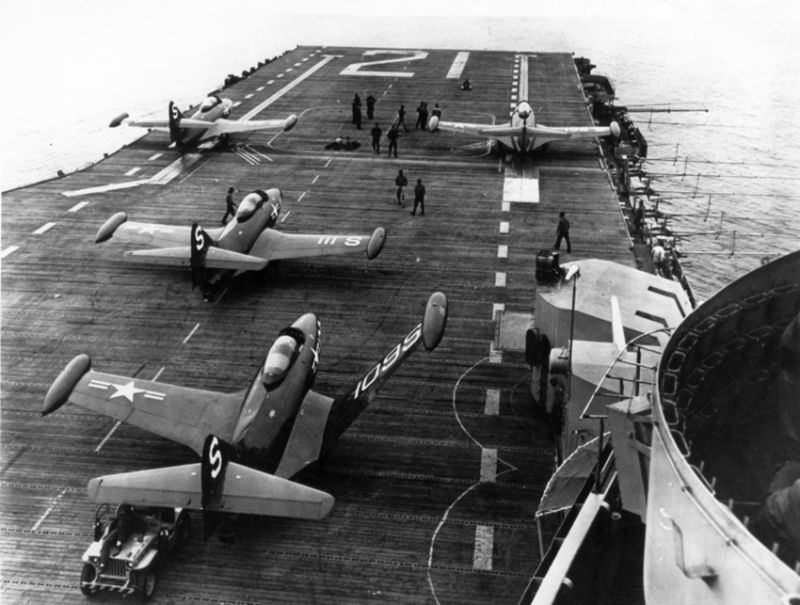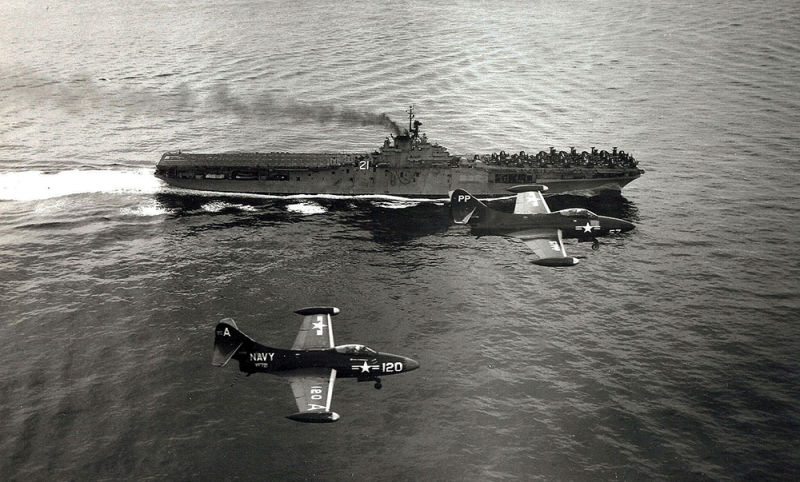
It’s Friday, and we’ve turned the USS Oppositelock into the wind so can launch into the weekend.
Grumman F9F-3 Panthers line up for launch on the Essex-class carrier USS Boxer (CV-21) in 1949. The F9F was one America’s principle early jet fighters, and saw extensive action during the Korean War. It also served as the first jet aircraft for the Blue Angels. Boxer, the fifth American ship to be named after HMS Boxer, a British Royal Navy 12-gun gun-brig captured by the US in 1813, was commissioned in April 1945 but arrived too late so see service in WWII. After 10 training tours in the western Pacific she played a major role in the Korean War, and provided support for the landings at Incheon. In 1959, Boxer was transferred to the Atlantic and converted into an amphibious assault ship (LPH-4), and later was used to transport hundreds of US Army helicopters to Vietnam. The carrier also played a minor role in the Apollo program when she recovered the AS-201 Command Module following an early unmanned test flight. After 25 years of service, Boxer was decommissioned in 1969 and scrapped two years later.
